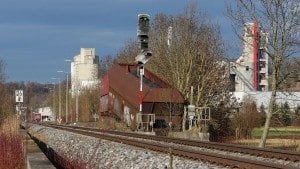Railroad Law: Three Class Action Case Examples
January 25, 2016 @ 9:34 am

According to the National Transportation Safety Board (NTSB), nearly 3,000 train-related accidents occur each year. These mishaps include derailments as well as collisions with other trains and motor vehicles. Factors contributing to train accidents include mechanical failure, human error and improper maintenance of tracks and equipment. The Federal Railroad Administration reports that nearly 1,000 people die annually in train-related accidents. Due to the large scale and wide ranging effects of these devastating accidents, class action lawsuits are the best way to handle grievances against the responsible parties.
Limits on Rail Passenger Liability
Amtrak has admitted liability for a derailment outside Philadelphia in May 2015 that killed eight and injured more than 200 people. This admission cleared the way for payment of $200 million in compensatory damages, the amount capped by federal law. The limits, enacted in 1997 as part of an Amtrak reform bill, were ruled to apply to all rail traffic as part of the legal proceeding surrounding a 2008 crash between a freight train and commuter train in Chatsworth, California. Although U.S. Code Title 49 imposes a limit on liability, lawyers for the injured are still authorized to pursue punitive damages if they can prove negligence occurred. This is the situation as CSX faces a $25 million class action lawsuit in federal court for a chemical spill caused by a derailment outside Maryville, Tennessee in July. Dozens of people reported injuries after exposure to toxic fumes. More than 200 victims are also suing CSX for a February derailment that caused a fire and explosion at Mount Carbon, West Virginia.
Commuter Rail Lawsuits and Outcomes
In addition to accidents related to Amtrak and major freight carriers, local transit systems also experience serious mishaps. Metro-North Railroad is facing liability for a commuter train derailment near Valhalla, New York in 2015. The company has settled almost 70 lawsuits related to another accident that occurred two years earlier outside Bridgeport, Connecticut. Plaintiffs have received nearly $10 million. It is believed that the Washington, DC Metro System paid out several million dollars to settle claims stemming from a 2009 commuter train crash. The exact amount was undisclosed due to terms of the settlement agreement.
Importance of Experienced Legal Advice
Whether they involve a local transit system or a nationwide carrier, these types of personal injury cases are complex. You will need the assistance of a highly experienced attorney to scrutinize the evidence and ensure that all your rights are fully protected. Although the NTSB and other governmental agencies will investigate these accidents, it is still important for you to have your own team of investigators, safety inspectors and industry experts. If you or a loved one have been injured in a mass transit accident or have been exposed to toxic chemicals, our experienced personal injury team will ensure that you receive accurate, timely and professional assistance. It is essential that you have someone on your side who understands any restrictions on compensatory and punitive damages as well as ongoing medical care expenses imposed by federal law.
If you or a loved one has suffered a personal injury or wrongful death as the result of a derailment or other railroad-related accident, contact Morrow, Morrow, Ryan & Bassett to discuss your case. We have a successful track record in handling these types of cases. As co-lead counsel, we were able to secure $65 million in compensatory damages for personal injuries and property damage resulting from the Union Pacific Eunice Train Derailment. During the no-obligation consultation, we will discuss your case and provide you with the information you need to make an informed legal decision.
